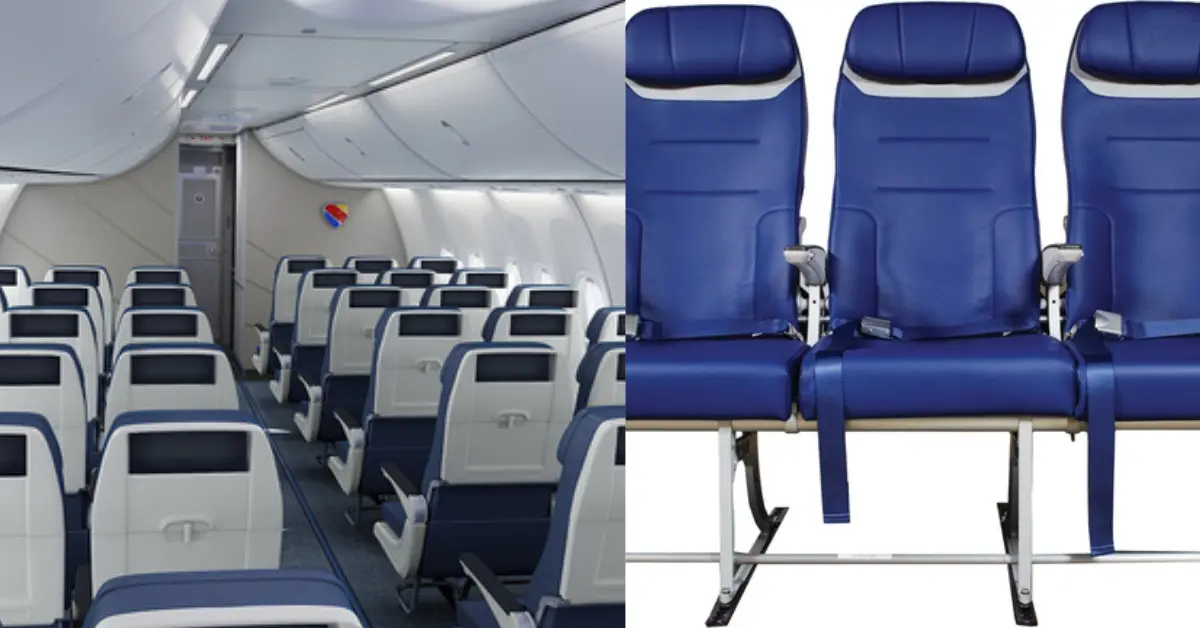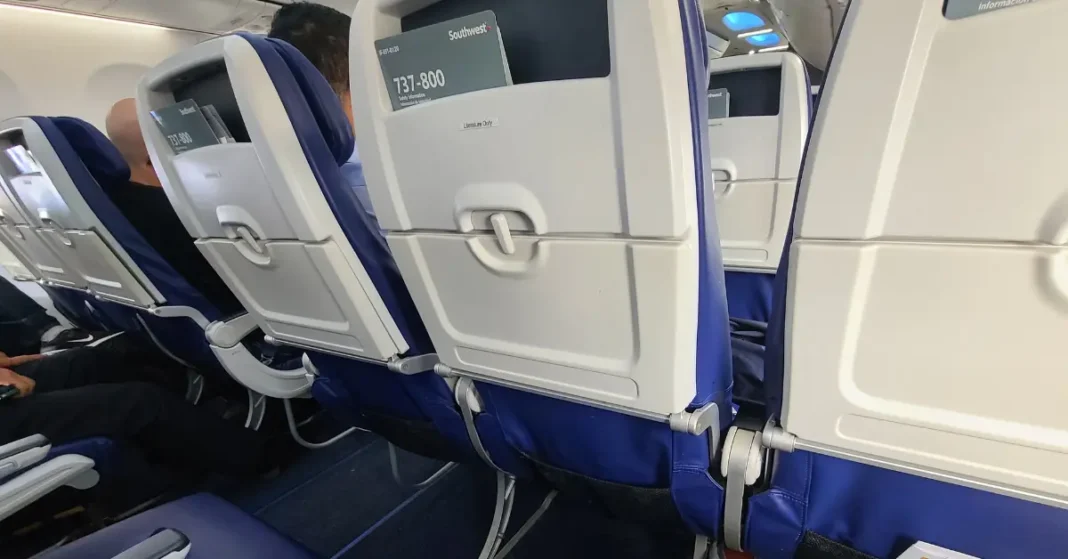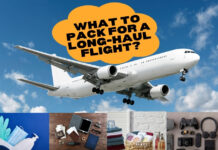When it comes to air travel, passengers often seek a blend of comfort, convenience, and value. Southwest Airlines, a carrier known for its customer-focused approach, diverges from the conventional norms of cabin classes, offering a distinct travel experience that defies the standard first-class allure.
This blog will examine Southwest Airlines’ seating arrangements, a topic that unveils an innovative open seating policy, a stark contrast to the structured class system prevalent in other airlines. Probing deeper, we’ll uncover the facets of ‘Business Select,’ an offering that echoes premium service without conforming to the classic first-class template.
Southwest’s choice to forgo a traditional higher-tier cabin invites a closer look at how it shapes the customer experience, balancing efficiency with amenities to attract a diverse array of travelers.
Table of Contents
Does Southwest Airlines have first class seating?
Regrettably, Southwest Airlines does not provide traditional first-class seating. However, for passengers seeking an elevated experience, the airline offers an alternative known as Business Select. While not a conventional first-class section, Business Select is designed to provide a premium travel experience with certain perks and amenities. Business Select passengers enjoy priority boarding, allowing them to secure coveted early seating.
Why does Southwest not offer first class?
Southwest Airlines opts not to provide first-class seating due to multiple strategic considerations. Rooted in their low-cost carrier model, the airline prioritizes low fares and operational efficiency, and introducing first-class cabins could potentially escalate costs, undermining their competitive edge. Southwest’s open seating system, a popular and efficient feature, could be disrupted by implementing assigned seating associated with first-class.
The airline’s commitment to a friendly and inclusive atmosphere for all passengers further dissuades the introduction of a potentially divisive first-class experience. Maintaining a single cabin layout enhances operational efficiency, allowing quicker turnaround times at airports, while extensive market research indicates that a significant portion of Southwest’s customer base does not prioritize first-class amenities. Instead, the airline offers Business Select fares, providing premium benefits without a substantial increase in price, catering to passengers desiring enhanced perks.
Does Southwest have bigger seats?
Southwest Airlines does not feature “bigger seats” in a general sense. Regardless of their location in the cabin, all standard seats on Southwest aircraft share the same size. This uniformity applies to seats in the front row, exit rows, and bulkheads. The width between armrests remains consistent at 17 inches for all seats across the entire aircraft.
Does Southwest have open seating?
Yes, Southwest Airlines stands as the sole major U.S. airline to embrace open seating. This signifies that passengers do not receive assigned seats and have the freedom to select any available seat upon boarding the plane.
Does checking in early get you a better seat on Southwest?
Certainly, checking in early with Southwest Airlines enhances the likelihood of securing a more favorable seat. Southwest employs an open seating system, allowing passengers to choose their seats upon boarding, and early check-in provides passengers with greater seat selection options.
Southwest Airlines Seating Arrangements
In the aviation playground, where the big players jostle with complex algorithms to maximize profits, Southwest Airlines disrupts the status quo with a refreshingly simple approach to seating. Imagine boarding a plane without the shackles of assigned seating; this is the no-fuss, customer-centric method Southwest adopts.
By opting for an open seating policy, passengers are empowered with the freedom to select their seats during boarding. This approach not only champions personal choice but streamlines the boarding process, propelling Southwest to industry-leading turnaround times.

But how does such a system not descend into chaos, you might wonder? The answer lies in their ingenious boarding process, categorized into three groups (A, B, and C) and numbered positions. Passengers receive a boarding position based on check-in time, incentivizing early check-in and fostering a sense of fairness.
The genius doesn’t stop there; Southwest’s lack of first-class sections or extra legroom gimmicks levels the playing field, fostering a democratic atmosphere onboard. It’s the epitome of business acumen: simplicity infused with efficiency, driving customer satisfaction and loyalty.
The brilliance of such a model is its scalability and adaptability. While competitors are bogged down with complex tier systems and the maintenance of premium cabins, Southwest sprints ahead with agility, ready to pivot and adapt to the ever-evolving market demands. The result? A consistent, enjoyable experience that turns passengers into advocates and skeptics into believers, all the while keeping operational costs at bay. This is not just a seating policy; it’s a masterclass in business strategy.
Customer Experience on Southwest
Elevating the in-flight experience, Southwest Airlines cleverly crafts premium services to address even the most nuanced flyer preferences. Understanding discerning passengers crave ease and exclusivity, the airline introduces the EarlyBird Check-In™ — a solution for those who yearn to secure an advantageous boarding position without the last-minute hustle. This service automates the check-in process, offering peace of mind and an effortless transition to the aircraft.
The conveniences extend skyward with the Southwest Airlines Rapid Rewards® program, tailored to the high-fliers who invest in relationships with their chosen carrier. This program transcends the usual points-for-miles exchange, diving into a world where loyalty equates to accelerated earning potential, tiered benefits, and access to an expedited security line at select airports — acknowledging that time, indeed, is the ultimate luxury.
In tandem with their flight perks, Southwest leverages partnerships to offer exclusive deals on car rentals, hotels, and travel experiences, enabling passengers to seamlessly curate a holistic journey. Through such alliances, Southwest enriches its value proposition, asserting that while the journey may start at 35,000 feet, the rewards soar even higher, crafting a comprehensive travel ecosystem that commendably understands the interconnected nature of today’s business and leisure voyages.
The essence of Southwest Airlines’ travel ethos hovers around a core value proposition that intertwines convenience with a sense of egalitarian comfort. This model underscores an astute recognition of traveler diversity — a strategy that substitutes a segregated cabin format with a more unified approach to flying. Whether through priority boarding, adaptable reward programs, or the absence of change fees, Southwest Airlines continues to redefine what it means to fly with value.
The airline underscores that premium service need not be compartmentalized into a first-class section but rather can be woven into the fabric of a comprehensive, customer-centric travel experience. Southwest’s pioneering spirit in seating and service doesn’t just challenge industry norms — it invites passengers to rethink the parameters of what makes air travel both pleasurable and accessible.





